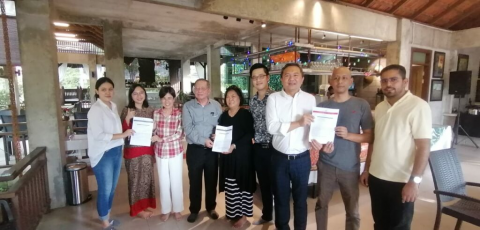29 October 1987 – Daily newspapers The Star and Sin Chew Jit Poh as well as weekly papers The Sunday Star and Watan were suspended following the Operation Lalang initiated by former Prime Minister Dr. Tun Mahathir Mohamad in 1987. The Star was specifically targeted due to a weekly column by the first Prime Minister Tunku Abdul Rahman, namely “As I see It”, which was alleged to be propagating and pushing liberal agendas into the-then political atmosphere. Prior to the suspension, the front page of The Star also featured mug shot of prominent oppositional leaders nabbed in by Operation Lalang with the healine “Detained”. The permit suspension lasted for six months and after its republication, The Star practised heavy self-censorship and lost its liberal flavour. Sin Chew Jit Poh managed to find a new owner and republished but Watan was shut down completely in 1996.
24 December 1999 – The privately-funded, pro-opposition bi-weekly paper Detik was issued a show-cause letter by Ministry of Home Affairs demanding the reason why Detik should not have its permit revoked. The allegation came on the ground that Detik had violated the term by not informing the Ministry of Home Affairs the appointment of new Editor-In-Chief, not printing a mailing address on its masthead, and transferring its permit to another publishing company without the ministry’s consent. When the permit expired in December, the home ministry claimed that they needed time to investigate the license renewal. The subsequent delay in the renewal costed Detik at least three issues.
30 September 2002 – Oriental Daily New (ODN), a new, independent, Chinese-oriented, daily newspaper was suspended without any explanation given after having only one issue published. Public speculation maintained that the suspension was due to political pressure. Although the ban was later lifted in December, both OGN management and public complained that vendors selling ODN had been warned by employees of ODN associated with Malaysia Chinese Association (MCA) to not sell the newspaper.
15 February 2006 – Various news outlets such as Berita Petang Sarawak, Guang Ming Daily, Sarawak Tribune, and The New Straits Times received suspension after they featured a caricature of Prophet Muhammad originated from Danish newspaper Jyllands-Posten. Sarawak Tribue was suspended indefinitely after an article with the cartoon, entitled “Cartoon not much impact here”, was published. Both Berita Petang Sarawak and Guang Ming Daily had their license revoked for two weeks. However, no action was taken against The New Strait Times as it had publicly issued an apology for publishing the Prophet Cartoon controversy.
28 August 2008 – Online portal Malaysia Today had been denied access by the country’s largest internet service provider (ISP) TMnet after receiving order from Malaysia Communications and Multimedia Commission (MCMC). The ban came on the ground that some of the comments found from the website were insensitive and were “bordering on incitement”. The suspension was carried out under the Communications and Multimedia Act of 1998 (CMA). This was widely believed to be the first online censorship despite the promise of internet freedom in Multimedia Super Corridor Malaysia 10 Point Bill of Guarantees.
19 December 2013 – News weekly The Heat was suspended “indefinitely” after covering a critical front-page article on the expenditure of Prime Minister Najib Abdul Razak and his wife Datin Seri Rosmah Mansor. The article scrutinised the controversial spending of government whereby Rosmah used a government jet to attend a women’s summit in Qatar during the previous month. The suspension was then lifted by Putrajaya more than a month later.
27 July 2015 – Business papers The Edge Financial Daily and The Edge Weekly became the latest victim for media censorship when both news portals allegedly exposed that the short-lived joint venture of strategic investor 1 Malaysia Development Bhd (1MDB) and PetroSaudi International (PSI) harboured an ulterior motif – to siphon at least US$1.83 billion from Malaysian taxpayers. Though the allegation was substantiated with evidence, The Edge was accused of false reporting and subsequently received a three-month suspension effective from 27 July. Prior to this, access to the whistle-blower websites Sarawak Report had also been denied by MCMC as the websites apparently held key documents pertinent to the 1MDB scandal. Same reason was used to justify the ban of Sarawak Report – false reporting.


